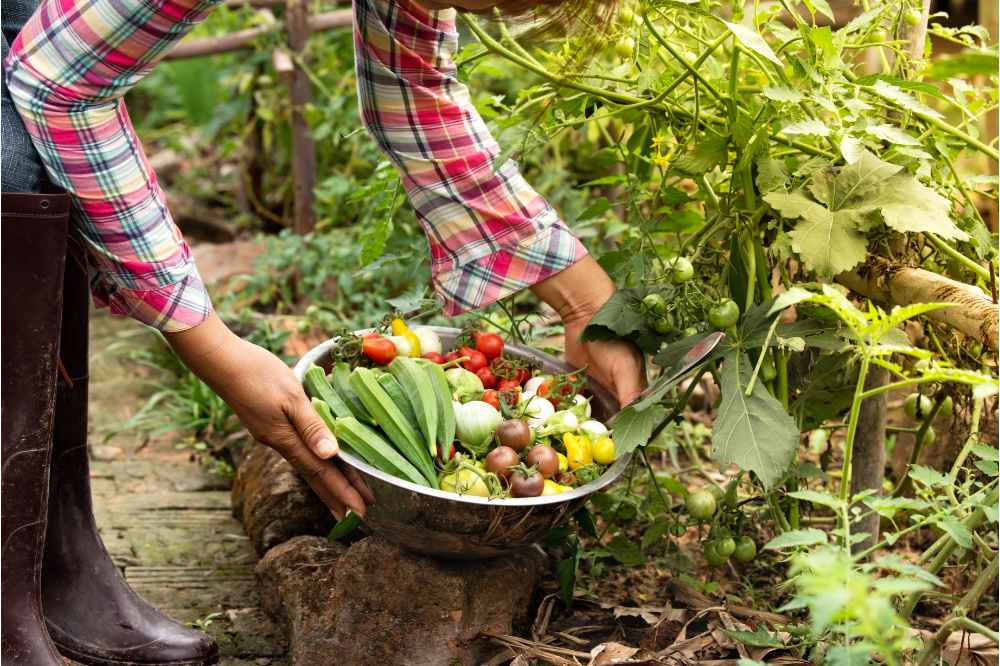How to Schedule Your Planting to Get the Maximum Yield From Your Raised Beds
By Oscar Collins
Author bio: Oscar Collins is the editor-in-chief at Modded, where he writes about the outdoors.
Gardeners with raised beds only need a few tools in their kit to make plants happier. Healthy, nourished crops produce more and validate all of the work you put into it. Many strategies revolve around scheduling and knowing the best times to perform specific tasks. Fortunately, many of these variables remain consistent, and the effectiveness of these scheduling techniques improves the more familiar you become with what you grow.

Understanding Your Climate and Local Growing Season
Knowing the climate and growing seasons of where you are is the most vital asset to your success. Planting the right produce at the right time will save resources and increase motivation. The benefit of raised bed garden is they can extend the growing season, promise better soil, and increase protection against threats like pests. Here are the specs to consider when planting:
- Shade or light access
- Soil acidity and moisture content
- Length of heat waves or cold snaps
- Humidity
- Potential for natural disasters
- Proximity to environmental fixtures like water bodies
Another excellent resource is the USDA Plant Hardiness Zone Map. It shows temperatures and zone designation to assist you in planning the perennials in the beds. It explains the coldest temperature they can survive at. Each plant has a recommended zone, and many can thrive in multiple. Literally, going outside of a plant’s comfort zone results in failed yields.
Raised bed gardeners should also contact local gardening organizations and agricultural offices for more curated advice for your specific region.
Planning Your Raised Bed Garden
Get started on planning beds before the start of the growing season to make sure you stay on schedule. You may have raised beds in place or it may be your first time operating a garden. These are the top considerations and to-do’s to get under control before spring. Only one rule applies when getting them ready — always work outside the beds and never inside.
1. Reinforce the raised beds
Check for repairs, such as loose nails or compromised wood and boundaries. Is there adequate drainage? This also means looking for invasive roots and getting them out of the way. In addition to the beds, flowers and other plants on your garden’s edge might need potting to keep everything orderly and healthy in independent spaces. Next, you must turn cover crops if you planted them the previous season to renourish the soil. Add more soil, compost, and fertilizer if necessary.
2. Consider shade and irrigation
Then, it would be best if you considered shade and irrigation. How much light do your plants need? Regardless, it may be helpful to shield them with a sheet anyway. Ensure your watering system gives the appropriate amount to each perennial, which should be in separate beds if possible. Or, you may have chosen companion planting, which is putting specific plants near each other because they benefit one another.
3. Set the trellis
Finally, if you need trellises or stakes, set those up now. Depending on your preferred gardening methodology, you may need to add other steps or alter these. For example, no-till gardeners, you’ll need to cover settled soil with compost or peat.
Creating a Planting Calendar
A planting calendar is in order now that the beds have what you want with the perfect conditions. A planting calendar tells you the best times to plant veggies or flowers based on cold and warm seasons, though some may be fine all year. Create one by going through these easy steps:
- Determine your area’s season start, which is the last spring frost.
- Learn the average first fall frost date to signify the end of the growing season.
- Make a list of everything you want to grow for each season based on their robustness. For example, long-season warm plants include tomatoes and peppers. Short-season cool plants include spinach and lettuce.
- Schedule dates in calendars based on crop growth trends and seasonality. This may vary depending on intercropping or personal planting methods.
Crop Rotation, Succession Planting and Intercropping
Perfecting the planting schedule also requires you to think about these three strategies because they will influence the future of the beds:
- Crop rotation: Determines long-term planting schedules by choosing different crops in varied areas to prevent blight and cycle soil nutrients.
- Succession planting: Impacts the calendar by requiring you to plant small crop amounts a few times throughout the season to make it last longer.
- Intercropping: If you don’t want monoculture beds, you can try intercropping by growing several crops together.
Each technique maximizes yield in raised garden beds because the combinations may increase pollinator presence or soil fertility. You may also prevent disease as you tend to the soil.
Monitoring and Adjusting Your Planting Schedule
The climate crisis is making plants grow differently than they used to. Regions’ average temperatures are shifting, causing dates to change. The best way to schedule your metal raised beds for planting is to reevaluate each year. This is an ideal time to recognize regional weather differences while evaluating performance to do better next year.
For example, were there specific times when pests or illnesses were present? Was there more or less rain than you predicted? How does this data you collected inform plant scheduling for the next year?
Getting More Out of Your Raised Beds
If you’ve ever dreamed of getting a few more tomatoes and flowers from raised beds, all gardeners need is more information. Knowing crop rotations and preparing soil are beneficial ways to level up harvesting.
Conclusion
Every year you employ these methods, you will notice the literal fruits of your labors populate your garden with all of the nutrition and color prominent in cared-for beds.




